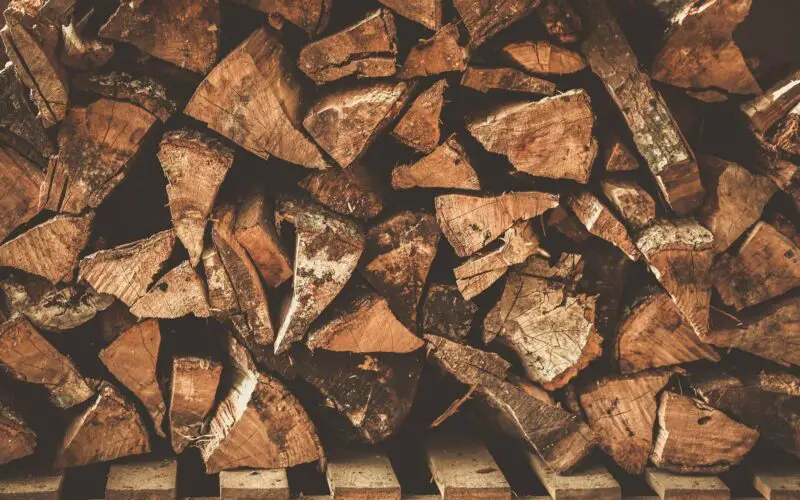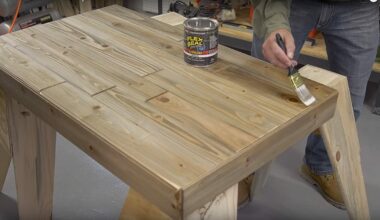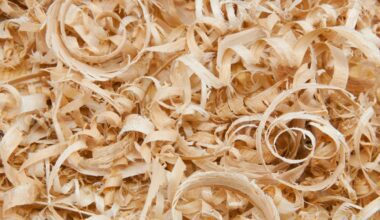Wood is one of our oldest natural resources that come from trees. The ecosystems that provide humans with the necessities of life depend heavily on it. People have survived for millions of years because of the 3.04 trillion trees that exist on the globe. In return, people are meant to preserve the abundance of this natural resource to ensure that the next generation will benefit from it.
Furthermore, enriching one’s knowledge about wood’s properties, origin, and background is one way to value its existence. Thus, here are our top and cool wood facts to help you learn more about wood and what it can do for humans.
Did you know?
Here’s a quick fact for you! The hardwood and softwood do not really refer to the softness and hardness of the material. For instance, balsa wood is a hardwood but is considered one of the lightest, least dense woods available. That’s cool!
Actually, the difference between hardwood and softwood is related to plant reproduction. All plants generate seeds to reproduce, but seed structures differ. Angiosperms, or plants that produce seeds with a covering, include hardwood trees. On the other hand, gymnosperms include softwoods. These plants do not cover the seeds as they fall to the ground. This group includes pine trees, which produce seeds inside sturdy cones.
We are just about to start the discovery of cool facts about woods. If the above information catches your interest, then more of the same inputs are coming. Let’s get to know more about woods in the following sections.
Scientific Facts
When people talk about science, it always comes with facts. In botany, wood refers to the fibrous, strong, hard substance found beneath the bark of trees, shrubs, and other plants. Its main characteristics are density, hardness, durability, strength, and etc.
Additionally, as people want to explore their knowledge about wood, there are some scientific queries about wood rising, and they want a science-based response to all of these. Fortunately, science can address all these concerns through facts to create more authentic information. You may find some of your questions about wood below.
Question 1. Can Wood Melt?
Melting refers to a physical process resulting in a phase transition from a solid to a liquid state. When the temperature increases to the melting point of a substance, the vibrational molecular energy exceeds the stabilization energy, and the molecules break free into liquid. Find out the answer if wood really melts.
Question 2. How Does Petrified Wood Form?
They say that petrified wood is so old that it came from the era of the dinosaurs. But do you know how petrified wood was made? This guide will show you how.
Question 3. Is Wood a Conductor or Insulator?
Have you ever wondered if wood is a conductor or an insulator? This has been a long-standing debate in most woodworking and wood forums. Some people claim that wood is an insulator because it simply does not let electricity flow.
However, there are people who push the idea that wood is a good conductor because of some of its natural properties. Here is a breakdown of why wood could be a conductor or an insulator.
Question 4. Is Wood a Fossil Fuel?
It’s natural to feel worried about the sustainability of wood especially when you are using it daily at home or for commercial purposes. Imagine if all homes use wood for cooking and heating, would there be any left to burn after a few years? Going back to the question, is wood a fossil fuel?
Question 5. Is Wood Heterogeneous or Homogeneous?
Bet you did not realize that wood is a mixture much like the human body. One sample of wood may contain more water or oxygen compared to samples taken from other areas. If you look for an answer, here’s what you need to know about the type of mixture a wood may belong to.
Question 6. Is Bamboo Wood?
The fact that bamboo is strong and can last for a long time makes this one of the most popular building materials for home furniture and even for home construction. But what is bamboo really? Is it a tree, a wood or a plant? Find out what bamboo is and why it’s so popular from this simple guide.
Question 7. What are the Strongest Woods?
Different wood types share the same properties. However, they are not equal in terms of extent and functionality. For instance, there are claimed to be the strongest woods in the world while some woods possess average strength.
When selecting a type of wood for your next project it is important to also consider the strength and durability of your material. To give you a good idea, here are ten of the hardest woods in the world.
Question 8. Why Does Wood Float and Sink?
Wooden boats, rafts, canoes, and wooden toy boats, why do these float? Is it because of a special property in wood that makes it float? Something as heavy as a log can also float in water! The secret to wood’s floating powers will be revealed in this short guide about wood and its properties.
Mathematical Facts
Sometimes, wood can be confusing, especially for those new to woodworking. There are numerous math-related terms, measurements, and units to learn, especially when purchasing firewood. For instance, a wood measurement of 2 x 4 is not 2 inches by 4 inches because wood sizes differ from other materials.
Thus, it is essential that you should know important information about wood in terms of numbers and how measurement units play an important role in the success of your wood projects.
Wood units of measurement
Just like buying food items, basic terminologies are used when buying wood. Terms like full cord, face cord, throw cord, and the green cord are the most commonly used units of measurement to purchase firewood. Understanding each one will help you get more value out of your purchases, especially when you frequently use wood at home.
Full cord
A full cord of firewood is an amount of wood in a space that measures eight feet long, four feet high by four feet deep. The standard length for firewood in a full cord is 16″ long, and usually, a full cord of firewood will have three rows stacked four feet wide and eight feet long.
Face cords
Compared to a full cord, there is no agreed-upon length for pieces of wood in a face cord. Usually, the length of most firewood is 16 inches so the depth of most face cord piles is 16 inches or one-third the depth of a full cord.
Thrown cord
When you think of a rough measurement of wood, then you have a thrown cord. This is the volume of wood tossed or dumped in a truck. Thrown cord logs are not arranged in a pile but tossed and dumped in a truck.
Green cord
Another way to measure wood is the green cord. This is a measurement made before the wood was split and dried. The dried volume could be smaller than the indicated volume by 8 cubic feet. The green cord volume could be 180 cubic feet when the green cord is stacked loosely.
Rick of Wood
Every word means something when buying wood. But if you are looking for a more informal way to buy wood from a supplier, you are talking about a rick of wood.
Technical Facts
Sometimes, an expert sees things correctly, but people may not see the way they must be. For instance, wood can be considered an external part of a tree. But an expert says it is generally described to encompass the same sort of tissue elsewhere, such as the roots of trees or shrubs. Specifically, it narrowly refers to the secondary xylem in the stems of trees.
Relatively, with some expert knowledge about wood, you can learn their basic processes. In this section, you will delve into a more technical aspect of woods, which includes the list of available articles below.
Related Articles:
- Wood Fact | Can Acrylic Paint Be Used on Wood?
- Difference Between Putty and Filler: How and When to Use
- What to do with Wood Chips?
- Wood Fact | How to Make Wood Alcohol
- Wood Fact | Flexible Products that also Work on Woods
Historical Facts
With evidence indicating that dwellings created more than 10,000 years ago used wood as their primary source for construction materials, wood is one of the oldest building materials known to man. Since that time, the use of wood in construction has developed and improved with the discovery of new elements like steel and bronze.
Let’s go back in time and witness the development of wood across time and civilizations. We aim to provide a clear picture of ancient wood stories from ancient times.
Ancient Egypt
Before the beginning of history, Egypt’s land was abundant with trees. The petrified woodlands next to the El Mokattam plateau and the Giza pyramids are examples of these trees. Pharaohs of Egypt planted and cared for trees. They imported cedar and pine wood from Syria and ebony wood from Sudan. Let us find out the influence of Egypt in the wood industry and what happened to its land, which was once abundant in trees.
Read: Wood Fact | The Influence of Ancient Egypt
Ancient Rome
While most historical architectural contributions of the Roman Empire were made of natural stone, the foundation of these structures was made using very strong and reliable wood. No doubt that using wooden structures such as wooden scaffolding is still a popular technique nowadays. During the Roman period, workers who constructed temples, theaters, buildings, and homes used wood.
Read: Wood Fact | The Influence of Ancient Rome
Ancient China
Ancient Chinese woodworking is still evident until this time, as seen on their traditional furniture pieces and heritage sites. Most of the old western buildings and architectural systems were erected with stones, which are magnificent and still exist today with the influence of Chinese woodworking.
Read: Wood Fact | The Influence of Ancient Rome
Cultural Facts
Wood has varying concepts across countries from different continents. This diversity is due to their respective cultures. Thus, it is also important to consider how wood differs in different countries regarding cultural aspects.
Africa
The African continent produces a large percentage of wood exports worldwide. South Africa is not only one of the biggest nations on the African continent, but it is also a major producer and exporter of African wood worldwide. According to resources, the nation exported timber worth $534.5 million in total in 2020. Beyond this idea, the culture of the continent manifests that wood has been engraved in their traditions since then.
Read: Wood Fact | Exploring the Wood and Culture of Zafimaniry in Madagascar
Asia
Asia is a very influential continent with rich history, techniques, carpentry, handicrafts and architecture. Many colonists were impressed and brought Asian woodwork masterpieces to their countries, inspiring them to enhance their own woodwork pieces. Be more inspired with the culture of this continent as you explore and delve in their world where wood plays a vital role.
Related Posts:
- Wood Fact | Exploring the Wood and Rich Culture Behind Daemokjang in Korea
- Wood Fact | Delving into the Chinese Wood Culture and Contributions
- Wood Fact | Sailing on Pinisi: The Indigenous Boat of Indonesia
- Wood Fact | Living on the Traditional Dwellings in Mongolia
America
Native American woodworking represents a small portion of human civilization, but the influence is tremendously widespread. They were able to sustain their rich culture and tradition regarding wood carving, which is greatly appreciated to this day. What makes it possible?
Read: Wood Fact | Admiring the Holy Week in Popayán and its Rich Symbolism from Wood
Europe
Europe is one of the world’s regions with the highest abundance of woods, with forests accounting for over 35% of the continent’s land area. Beyond its vast territory, Europe is rich in culture and tradition that is worth knowing. Interestingly, wood has been part of their customs that living without it is seemingly impossible.
Related Posts:
- Wood Fact | Exploring the Wood and Culture of Lithuania in Europe
- Wood Fact | The Strings that Attach Wood and Culture in Slovakia and Czechia
- Wood Fact | The Shared Connection of Wooden Toys and Family Bond in Croatia
- Wood Fact | Passing the Traditions of Norway’s Oselvar Boats to the New Generations
Wrapping Up
And those are the facts that I can give you so far. Woods have long been part of human development, history, and culture. As long as they become useful, the cool facts that make them “wood” will never end.








